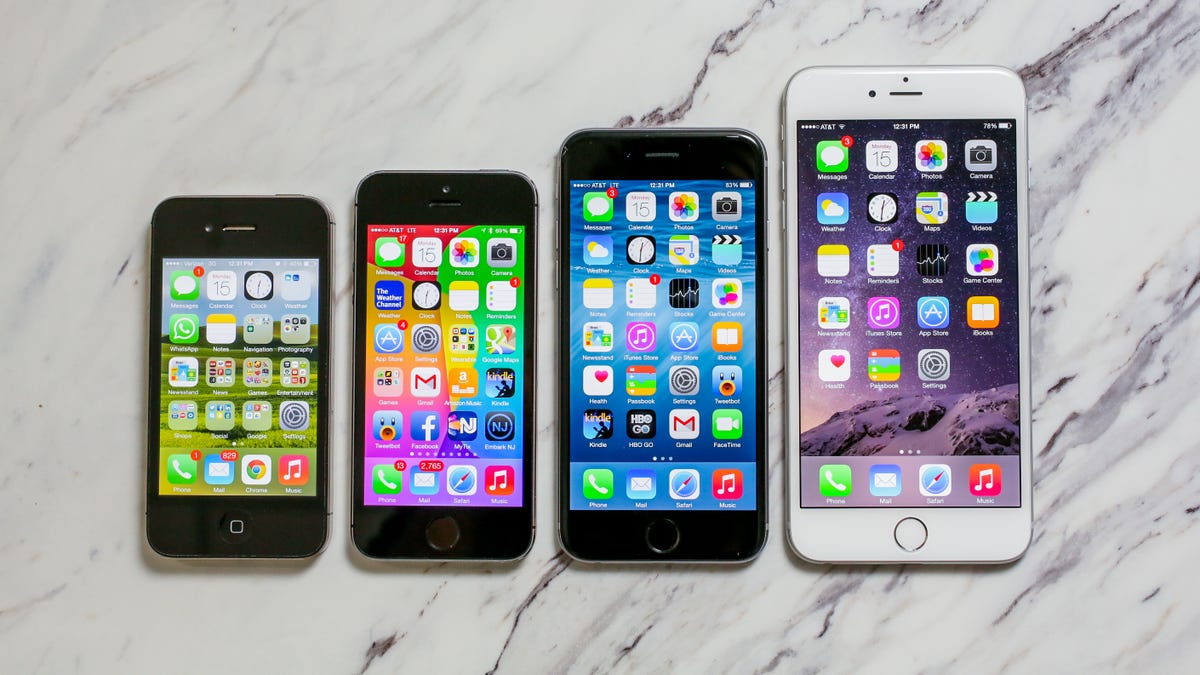
The entire iPhone family
The 5.5-inch iPhone 6 Plus and 4.7-inch iPhone 6 all but dwarf their predecessors. That's the 3.5-inch iPhone 4S on the far left, sitting beside the 4-inch iPhone 5S.
And here are the new iPhones lined up against the iPad.
There's quite a dramatic difference between the earliest iPhones and the latest batch, but the gulf between the iPhone 6 Plus and the 7.9-inch iPad mini isn't all that great.
Old meets new
And here are the iPhone 6 and iPhone 6 Plus alongside the iPhone 5S -- what a difference a year makes.
Bigger, but thinner
The new phones are larger, but they're also paradoxically thinner than their predecessor.
But make no mistake -- they're significantly larger, which could prove problematic if you've grown accustomed to the iPhone 5S.
There's also a slight but noticeable camera bulge in the new models -- that thinness didn't come without a price.
The competition
Here's how the new iPhones stack up against a crop of modern smartphones. The Samsung Galaxy S5 sits on the far right, beside the Nexus 5. The HTC One M8 for Windows Phone and Moto X are on the left.
The 5.2-inch Nexus 5 has a larger screen than the 4.7-inch iPhone 6, but the devices are actually about the same size.
And the 4.7-inch Moto X sitting to the right of the iPhone 6 Plus is actually a bit smaller than the 4.7-inch iPhone 6.
The thinnest iPhones yet
There's no denying that the new, larger iPhones are also very thin. The iPhone 6 is a scant 6.9mm thick, while the iphone 6 Plus is 7.1mm thick.
The closest contender is the 8.1mm-thick Samsung Galaxy S5, followed by the 8.6mm-thich Nexus 5. The HTC One M8 for Windows Phone comes in at 9.35mm thick, while the Moto X sits at 10.4mm.
Here we have the 5-inch HTC One M8 for Windows Phone and the 5.1-inch Samsung Galaxy S5 flanked by the iPhone 6 (left) and the iPhone 6 Plus.
The iPhone 6 has a 1,334x750-pixel resolution display that offers 326 pixels per inch (PPI). the other three devices have 1080p displays, with a PPI of 441 for the HTC One M8, 432 for the Galaxy S5, and 401 for the iPhone 6 Plus.

